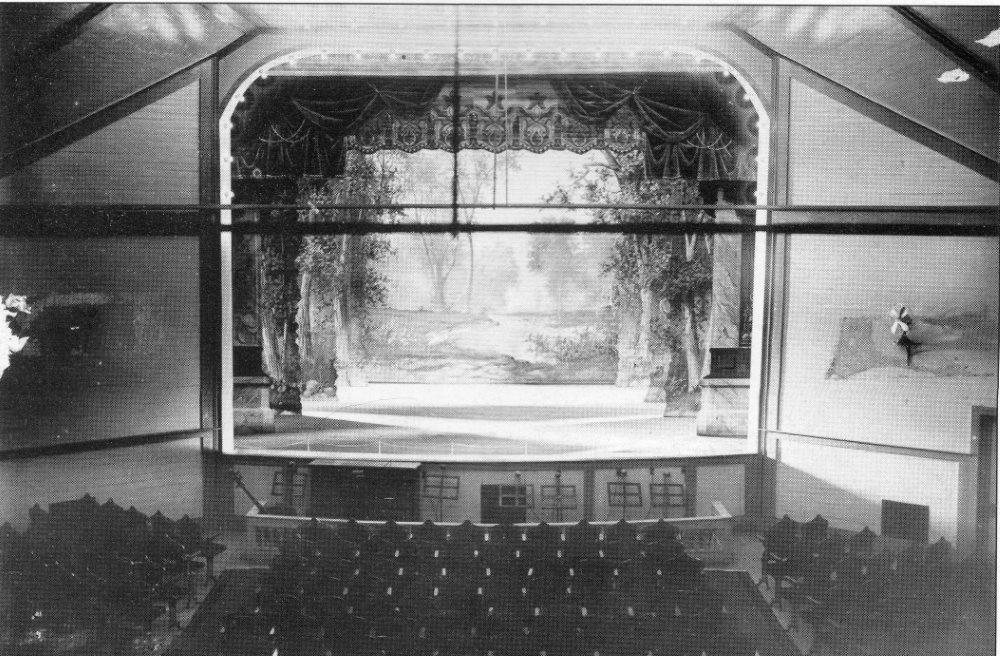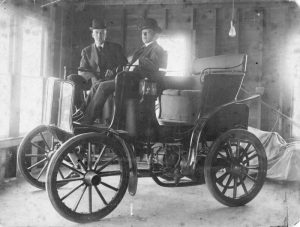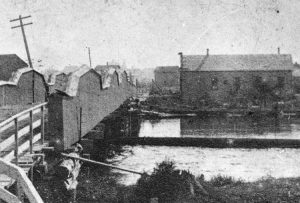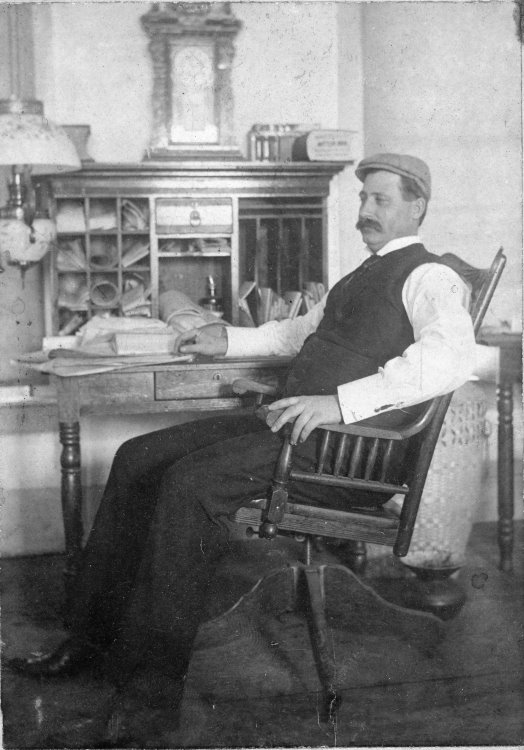
The interior of the Gero Theatre when it was still an opera house. SCHS Photo
During the early twentieth century, professional theatre companies toured the country via the railroad, and would stop in Manistique for a week’s engagement at the Gero Theatre. One railroad car housed the cast and crew, while two additional cars carried the actor’s costumes along with the company’s baggage and equipment. Livery workers and draymen had to haul as many as 60 trunks from the Soo Line depot to the theatre building.
A great lover of the theatre, Benjamin Gero purchased the Manistique Opera House, located on South Maple Street, in 1904 and redesigned the building to enhance live theatrical performances. He slanted the floor of the opera house toward the stage and installed permanent seating. A 70-foot tower behind the stage allowed scenery backdrops to be raised and lowered with a system of ropes and pulleys. An elevator made it easier for trunks and other theatre equipment to be transported to the second and third floors. In addition, the name of the opera house was changed to the “Gero Theatre.”



